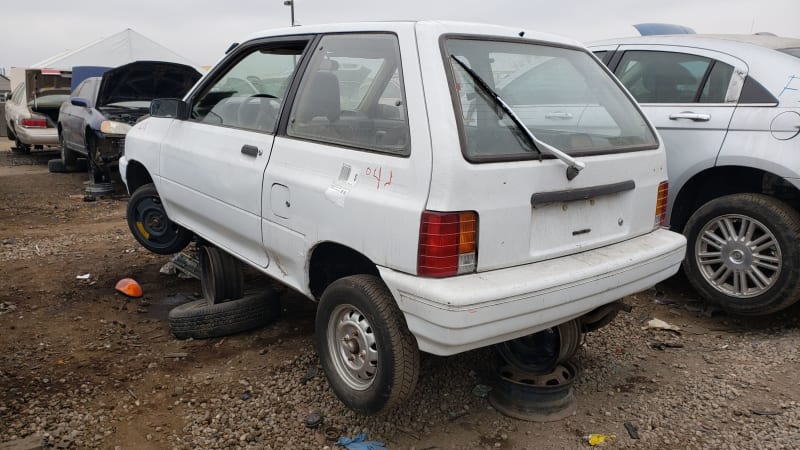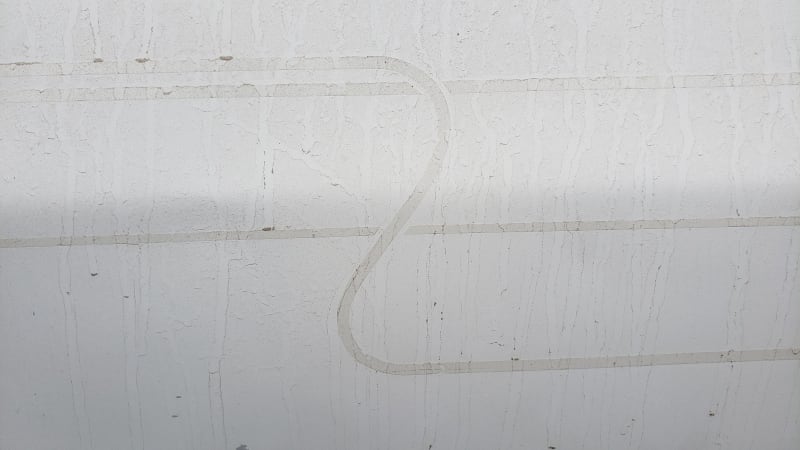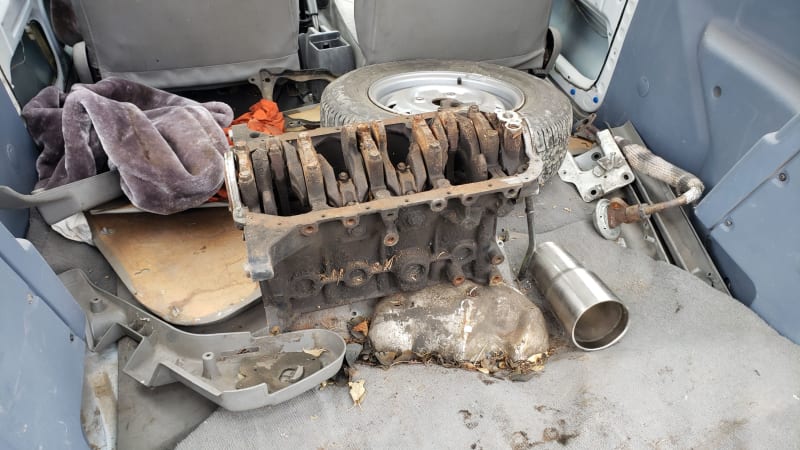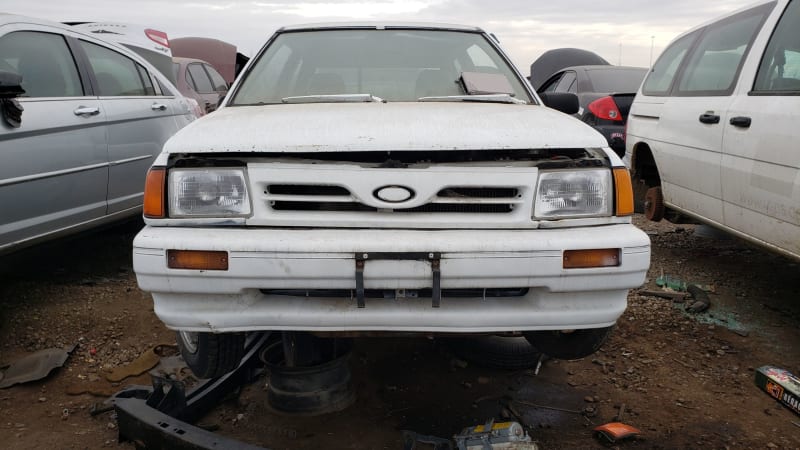Most cars that make it to astoundingly high mileage figures tend to fall into one of two categories: engineering masterpieces that ended up being hard to kill (and got a lifetime of at least the most important maintenance items) or machines that inspired unquestioning love from owners willing to keep opening their wallets for decades to keep them on the road. Today’s Junkyard Gem falls into neither of those groups; it’s a penny-pinching Ford Festiva, one of the cheapest cars available in its time … and yet it cracked the magical 300,000-mile mark before getting discarded.
So, a total of 317,207.3 miles over its nearly 30 years on the road. We just saw a discarded 1989 Honda Civic with a mere 308,895 miles on the clock, and this Festiva comes close to topping this 1993 Honda Civic DX. The highest-mileage junkyard car I’ve ever found (keep in mind that most cars before the middle 1980s had 5-digit odometers, and most cars this century have unreadable-in-the-boneyard electronic odometers) is this 1987 Mercedes-Benz 190E with an amazing 601,173 miles. This Mercedes-Benz 300D came close, with 535,971 miles. Detroit went to six-digit odometers late in the game, but this 1986 Olds Calais reached 363,033 miles, and this Ford Crown Victoria Police Interceptor reached the 412,013-mile figure thanks to a second career as a taxi.
A Festiva surpassing the 300k mark, though, is not something I ever expected to see. These cars were sold as cheap, no-frills transportation, period. The MSRP on a base-level Festiva started at $6,620 in 1991, or about $12,610 in 2020 bucks. Not many cars could squeeze under that price at that time; the Subaru Justy could be purchased for $5,995, the Hyundai Excel 3-door hatch cost $6,275, and the Yugo GV (yes, it could still be obtained new as late as 1991) had a hilarious $4,435 price tag. Even the lowly Geo Metro, Pontiac LeMans, and Toyota Tercel EZ cost more than this Festiva.
Still, this car came with snazzy pinstripes, now faded to near-invisibility by the Colorado sun.
You can see the cover plate in the spot where the air-conditioning button would have gone, had the original buyer of this car been willing to squander precious dollars on such frivolity.
Five-speed manual transmission, naturally. You could get an automatic in the Festiva, but anyone willing to spend that kind of money on extras would have been able to afford a much nicer Tercel EZ.
I don’t know if this short block assembly is a Festiva engine or from something else, but it may be that the original engine in this car (and its 63 fuel-efficient horses) died and the final owner found a never-to-be-installed replacement for the bottom end.
The Festiva started life as a Mazda design in 1986, which Kia assembled for the North American market. Festiva sales ceased here after 1993, though the second-generation version was available as the Ford Aspire. However, manufacture of the first-generation Kia Pride continues to this day in Iran and Venezuela, as the SAIPA 132 and 141 plus the Turpial 141 DLX.
Yes, a true world car!







